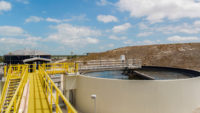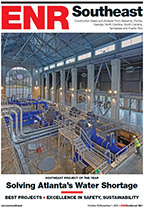The New York State Dept. of Environmental Conservation's (DEC) Hudson River Estuary Program has issued 12 grants worth a combined total of $564,000 for water resiliency projects in NYS. The funding comes after Hurricane Irene and Tropical Storm Lee both rocked the region in 2011, says DEC, which is working in partnership with the non-profit New England Interstate Water Pollution Control Commission (NEIWPCC) on the grant program.

The grants will help to further the Hudson River Estuary’s 2010-2014 agenda to conserve, protect and revitalize the waterway, DEC says. The estuary program is implemented through partnerships, says Lisa King, a DEC spokeswoman. NEIWPCC is a partner whose duties include providing technical support services and managing small contracts. The deadline for completed work for each of the grants is December 2014, King adds.
“These grants further Governor Cuomo’s vision of building back smarter and better after recent devastating storms, while aggressively adapting to on-coming climate change,” said DEC Commissioner Joe Martens in a recent statement. “These projects will enhance the environmental health of the Hudson estuary and help mitigate the impacts of flooding.”
Last year, DEC awarded a $1.9-million grant to the estuary program for projects in the Hudson Valley, King says.
Grant recipients include Stevens Institute of Technology, Hoboken, N.J., and ARCADIS, which were jointly awarded $80,000 to research shoreline protection strategies including New York City natural or engineered reefs, islands and marshes following Superstorm Sandy.
ARCADIS will also work with its partners—NEIWPCC; Stevens; The Nature Conservancy; NYC Dept. of Parks & Recreation; SCAPE Landscape Architecture; and Mathews Nielsen Landscape Architects—to study strategies and present findings at a workshop tentatively planned for next summer, says an ARCADIS spokeswoman.
Strategies to be considered will include restoring, creating or emulating natural coastal features such as living shorelines, ecologically enhanced bulkheads, vegetated dunes, beach nourishments and artificial reefs, she says.
Another grant recipient is the Lower Hudson Coalition of Conservation Districts, a coalition comprised of 11 soil and water conservation districts working to conserve water quality and natural resources in the Hudson River Estuary watershed. It will receive $144,400 for region-wide demonstrations of green infrastructure techniques including rain gardens, porous pavement systems, as well as roof water collection and reuse.
The other grant recipients are:
* Kingston, N.Y., which will receive $50,400 to design and implement a Rondout Creek Combined Overflow Sewer Monitoring System;
* Hamptonburgh, N.Y., will get $50,000 to evaluate options for removal or modification of Brown’s Pond Dam;
* SUNY Research Foundation, Albany, N.Y., will receive $47,765 to develop information supporting the assessment of stream resilience throughout the lower Hudson River watershed;
* eDesign Dynamics, New York, an environmental engineering and planning firm specializing in low-impact development, water resources, and habitat restoration, will receive $47,298 to determine the feasibility of green methods to improve combined sewer overflows in Newburgh, N.Y.;
* Riverkeeper will get $46,462 for water quality monitoring on the Hudson River Estuary and six tributaries;
* Orange County Water Authority will receive $29,733 to create a watershed management supplement to the Orange County Design Guide along with the Orange County Dept. of Planning and Regional Plan Association;
* Siena College, Loudonville, N.Y., will receive $20,000 to conduct water quality and quantity monitoring in the Kromma Kill watershed;
* Hyde Park, N.Y., will get $20,000 to design two projects to increase flood resilience in neighborhoods that are repeatedly damaged by major flooding;
* SUNY New Paltz will receive $20,000 for continued water quality monitoring in the Saw Mill Creek watershed; and
* River Haggie Outdoors, Hudson, N.Y., will get $8,000 to increase public involvement and improve understanding of watershed protection methods through education and outreach.



Post a comment to this article
Report Abusive Comment